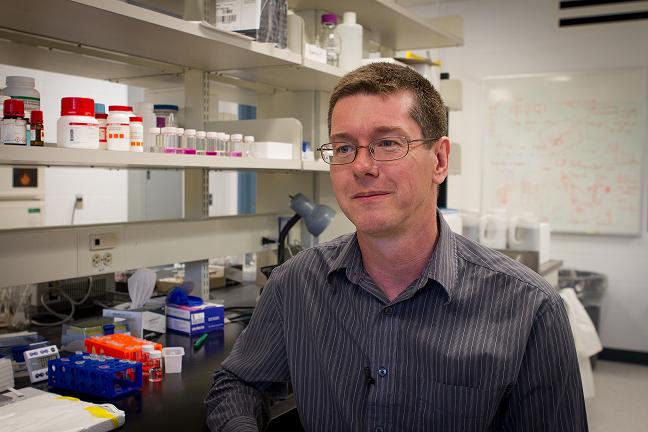
Urban beach closures due to coliform outbreaks have become disturbing signs of summer, yet water-testing technology has never been fast enough to keep up with changing conditions, nor accessible enough to check all waters.
Now, researchers at Hamilton, Ontario’s McMaster University have developed a rapid testing method using a simple paper strip that can detect E. coli in recreational water within minutes. The new tool can close the gap between outbreak and detection, improving public safety.
Scientists from the Sentinel Bioactive Paper Network have created and validated the viability of the test strip, which can detect potentially harmful concentrations of E. coli in water quickly and simply, with much greater accuracy than existing portable technology.
The work is described in a paper published online in the journal Analytical and Bioanalytical Chemistry.
“Coliforms are always a big problem,” says the paper’s lead author John Brennan, a McMaster chemistry professor who holds the Canada Research Chair in Bioanalytical Chemistry. “The methods used to detect outbreaks are slow, and tend not to be portable, as they often need a lab-based amplification step prior to testing, causing a time lag between an outbreak and a beach closure.”
The Natural Sciences and Engineering Research Council of Canada (NSERC) funds Sentinel, a strategic research network that spans the country and is based at McMaster. Several dozen researchers are involved in its initiatives.
Bioactive paper is both old and new, Brennan explains. Since the late 1950s, physicians have been using bioactive paper to test for glucose in urine. In the last several years, the area has expanded quickly and research has become very competitive as scientists work on new applications.
“It’s always a race,” Brennan says, noting that there are two problems with the old form of testing: the samples must be cultured for several hours before testing, and the tests are not quantitative.
The new strips are coated with chemicals that react to the bacteria, and are printed using inkjet technology similar to that found in standard desktop printers. Within 30 minutes of sampling, the paper changes colour to indicate the presence of E. coli, with colours coded to represent different forms and concentrations of the bacteria.
In the future, the test should make it possible for consumers to check their water affordably and easily, without additional equipment, scientific knowledge or long waits.
“One of the problems right now is that there is no simple, fast and cheap way to test recreational water, and certainly nothing out there in the realm of rapid tests for drinking water,” Brennan says.
Field testing of the prototype strips is planned or under way in Canada and across the globe, in regions where untreated water poses particular health hazards. The results of these studies will help to refine the test strips and may lead to strips that are sensitive enough to tell whether water is safe enough to drink, says Brennan.
The standards for safe drinking water are hundreds of times tighter than those for safe swimming water. Typically, limits for safe swimming allow for a maximum of 100 to 500 cells in 100 mL of water, depending on jurisdiction. For water to be considered safe for drinking, there cannot be even one cell in 100 mL—a little less than half a cup of water.
The next stage of pre-commercial development of the test strips is already funded by NSERC through a Phase I Idea to Innovation grant. Commercialization of a final product could take as little as two to three years. Brennan told Water Canada that his research team is developing a range of new strips for other pathogens and non-bacterial analytes, such as pesticides.
John Brennan explains in a video below:










This is good news. Grand Bend (Lambton Shores) has been trying to develop a rapid detection system for over 15 years but have never had the funding or support for it work.
Please consider the Grand Bend Beach for a test project. The Rotary Club members are currently taking 5 samples 5 days a week and having these sent to the lab for analysis. This is all done in accordance with the protocol of the Health Unit in Sarnia. The test strip could then be compared to the so called Gold Standard, which is not so golden in my view. Very accurate records are being kept which could be part of the project result. Thanks for considering our request.
Thanks for the comment, Paul. I suggest you connect with McMaster University if you’re interested in a pilot project.
Kerry